Even in an era when our smartphones and computers offer the most sophisticated and elegant sound engines around, the hardware synthesizer industry and aftermarket are booming. But while a computer offers versatility, a hardware synth offers musicality, allowing you to jam on whatever strange, futuristic sound you'd like to dial in without worrying hard drive space or the easy distractions of social media. The sustained appeal of synthesizers since the 1970s has led to a whole bunch of excellent machines passing under the radar, thanks to a combination of brutal competition, brand visibility, and the constantly shifting whims of musicians' sensibilities. Under-loved synthesizers tend to boast less heard sounds and nicer price tags, so it's worth taking a look at a few great ones.
Ensoniq ESQ-1
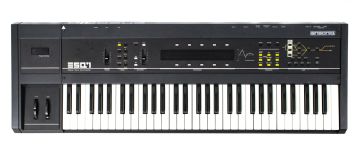
Ensoniq never had the big name prestige like Moog or Roland. This explains why few of its products have been mythologized by present-day gear heads despite turning out a slew of popular and affordable synthesizers during its 13-year run from 1985 to 1998. With a misleading reputation as an alternative to Yamaha's ubiquitous the DX-7, the ESQ-1 is a hybrid synthesizer done up as well as they come, running fantastic digital wavetable oscillators through analog filters, LFOs, and VCAs. All of that plus a flexible on-board sequencer makes for a muscular and flexible machine that can be easily obtained for under $500.
Roland JX-3P
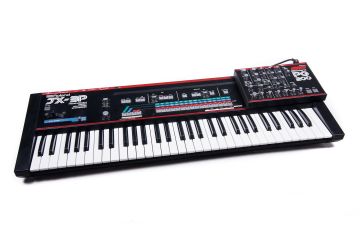
In Roland's formidable run of 1980s analog synth designs, the JX-3P assumes the role of the so-called red-headed stepchild. Employing the same exact analog oscillators that have made classics out of sister machines in Roland's Juno and Jupiter series—using two per voice while Junos and Jupiters only use one—the JX-3P suffered in its day because of its less conventional, knob-light interface. While menu-heavy programming would become par for the course as companies started producing digital synthesizers around the end of the 1980s, many still view such design as anathema to the tweakable appeal of analog keyboards. This has kept the JX-3P and its successor the JX-8P cheap on the aftermarket.
Waldorf Pulse 2
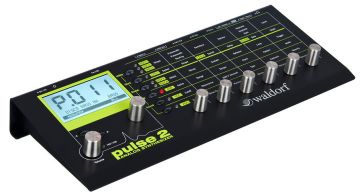
Even though Waldorf built its reputation amongst synthesists in the know with its adventurous and frugal-minded wavetable synthesizers, the company offered an analog mono synth in the 1990s called the Pulse. Its sequel, which was released last year, improves on it to make for an iconoclastic analog synth with an eye on the future. The Pulse 2 is a tabletop unit like the MFB Synth II, with a wide spectrum of tones and idiosyncratic features like eight-voice paraphony (meaning you can play a note with each oscillator) and looping envelopes. As has always been the case with Waldorf, the quiet reputation of its quality products has a lot to do with the company's relative obscurity.
Alesis Andromeda A6
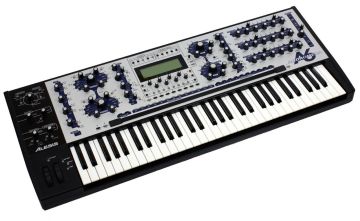
Easily one of the most sophisticated analog synthesizers ever built, the Andromeda A6's sales suffered from a high price tag and Alesis's reputation for bargain electronics that vary wildly in quality. But with 16-voice polyphony, separate arpeggiators per voice, seven-stage envelopes, and all analog circuitry (excepting the wide array of very out-there digital effects), the years since Andromeda A6 went out of production in 2001 have seen it accrue a reputation as one of the most versatile analog synths in existence.
MFB Synth II
The Synth II's launch late last decade presaged the current analog revival that sees contemporary companies from Korg to Arturia to Dave Smith Instruments selling newly designed analog synths like hotcakes. Despite its status as a forerunner, the Synth II has likely been slept-on because of its low-key distribution. Manufactured by German firm MFB, the Synth II is one of the few 20th-century monophonic synths to sport voltage controlled, instead of digitally controlled oscillators, lending the petite tabletop box a Moog-esque sound. This makes for a steal for even at its MSRP. The quality of sound and knob-heavy interface more than make up for the fact that you need a MIDI keyboard controller to play it conventionally.
Korg DW-8000

Much like the Ensoniq ESQ-1, the DW-8000 is a hybrid synth, but the only analog component is the filters. And much like the Roland JX-3P, it's menu-heavy programming rubbed knob-friendly players the long way. But its incredibly versatile set of sounds, sublime digital delay, and fun features such as a quality arpeggiator and auto-bend function has won it a legion of followers ranging from techno producers to new age musicians to synth poppers. Its friendly aftermarket price, often around $300, makes for an easily obtainable instrument that just about does it all.
Oberheim OB-12
The OB-12's release in 2000 made it only the second synthesizer released by Oberheim since the company was acquired by the Gibson guitar company in 1986. Several factors led to the OB-12's unpopularity at the time: the fact that it was a digital synth from a brand known for its analog instruments, the fact that founder Tom Oberheim was uninvolved in its design process, and the flop of the first machine in the Gibson years, the OB-MX. But a decade and a half later, with the synth's dedicated knobs for just about every function, funky timbres, and idiosyncratic Morph feature for blending programmed sounds, the OB-12 is beginning to be understood as one of the most powerful synthesizer built around the turn of the century.
The EVI
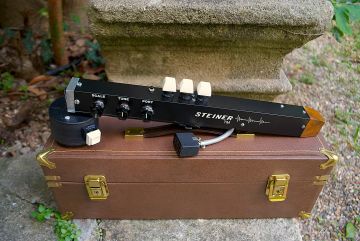
Not slept-on as much as barely extent, the EVI deserves a mention on this list because there really has never been anything like it in the history of electronic instruments. Produced by Steiner-Parker during the second half of the 1970s, the Electronic Valve Instrument is synthesizer held like a trumpet with an air pressure sensor controlling the volume of the single analog oscillator. A combination of four keys and a twisting cylinder at the bell-end of the device control pitch, opening the door for brass players to innovate as synth players. Not many EVIs were made, and today they're hard to come by. But the EVI's spirit lives on in MIDI wind controllers such as the Akai EWI and the Yamaha WX5.
Funky Voltage Under $1000